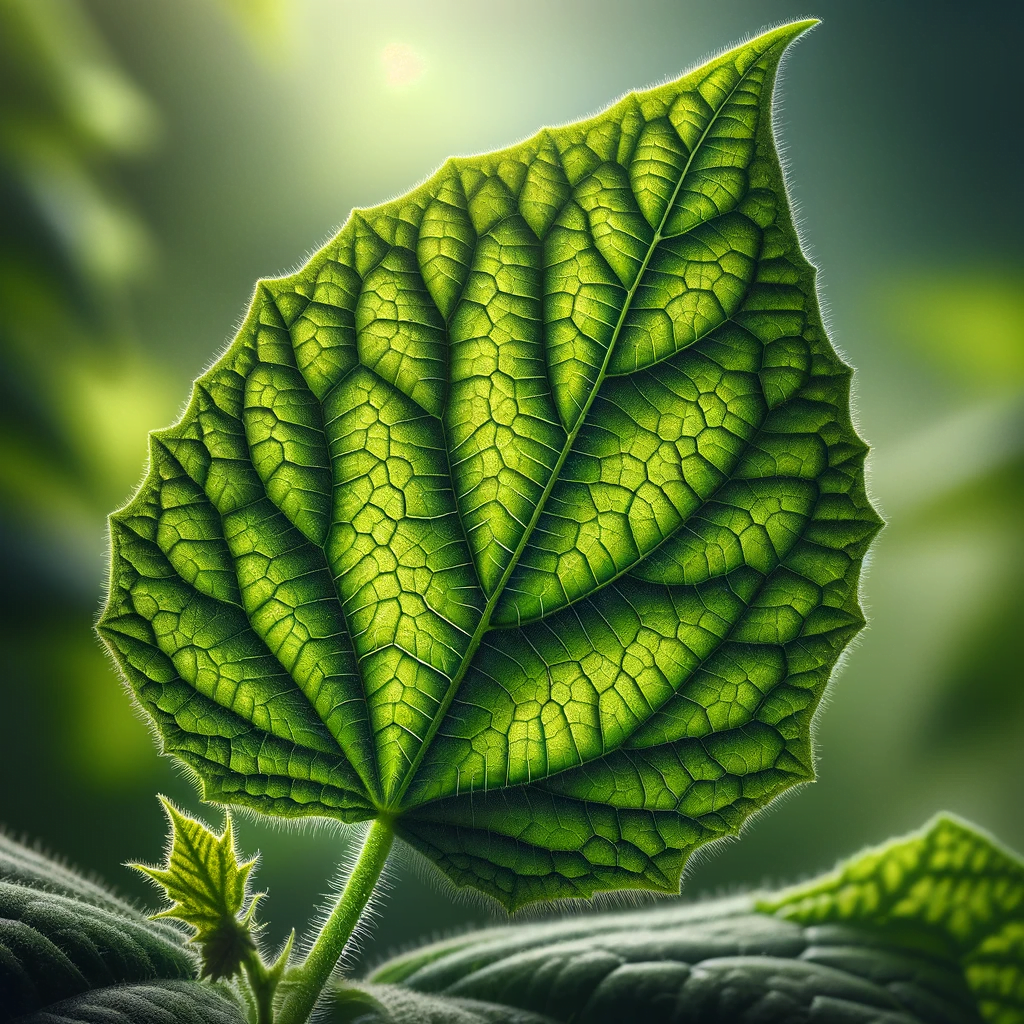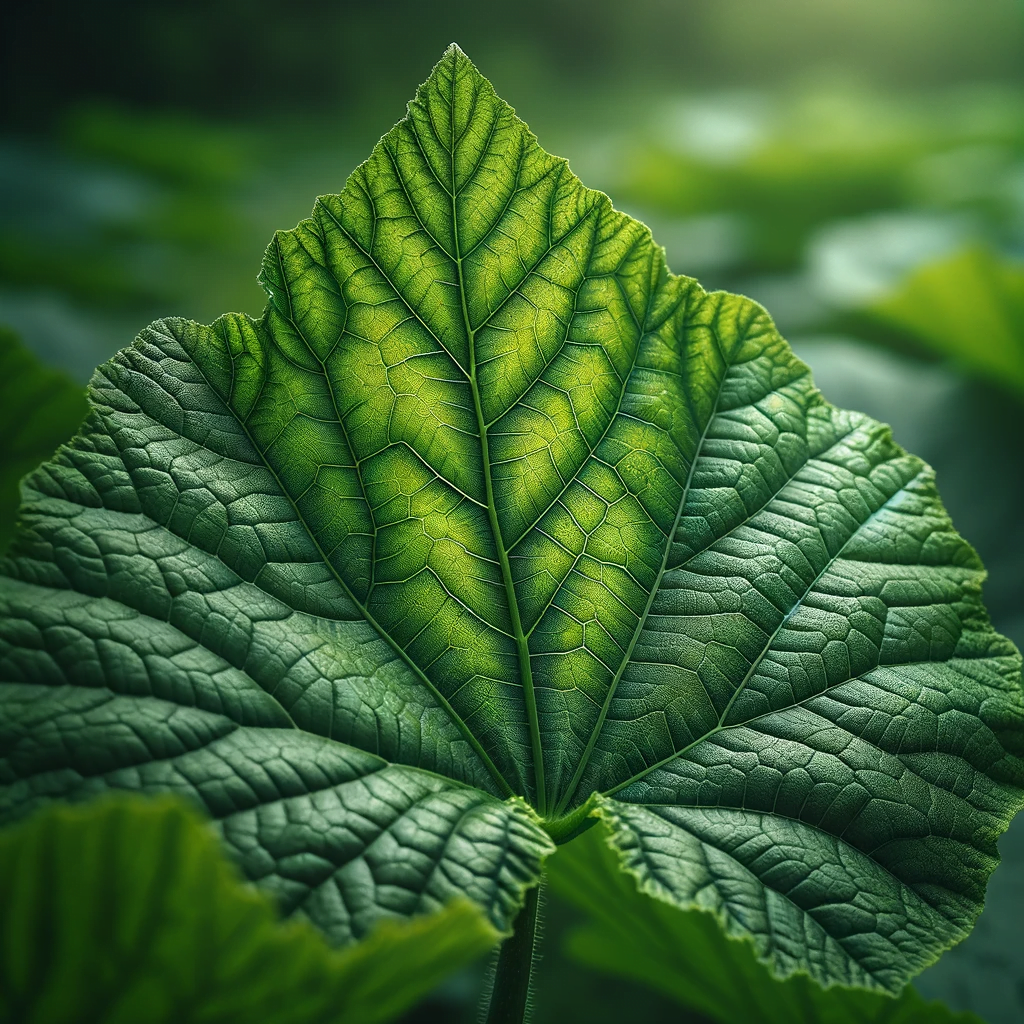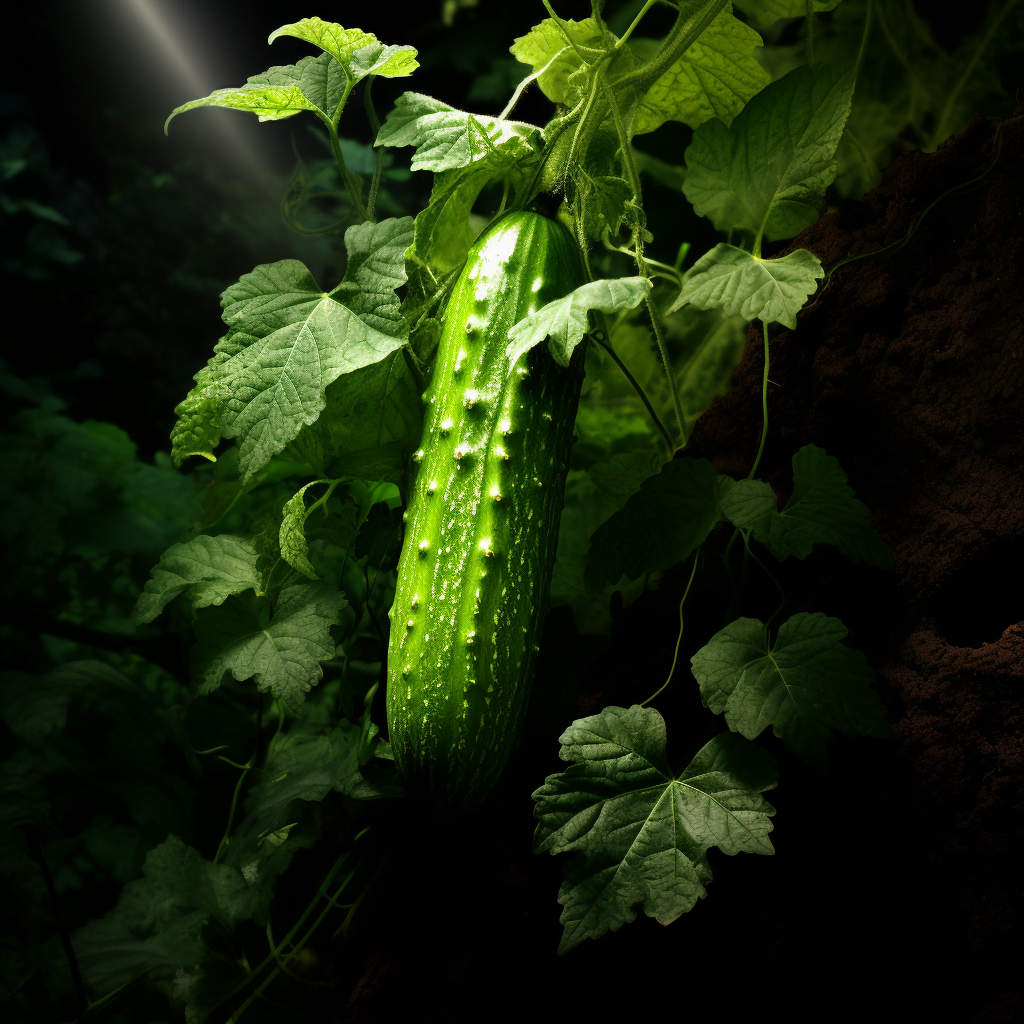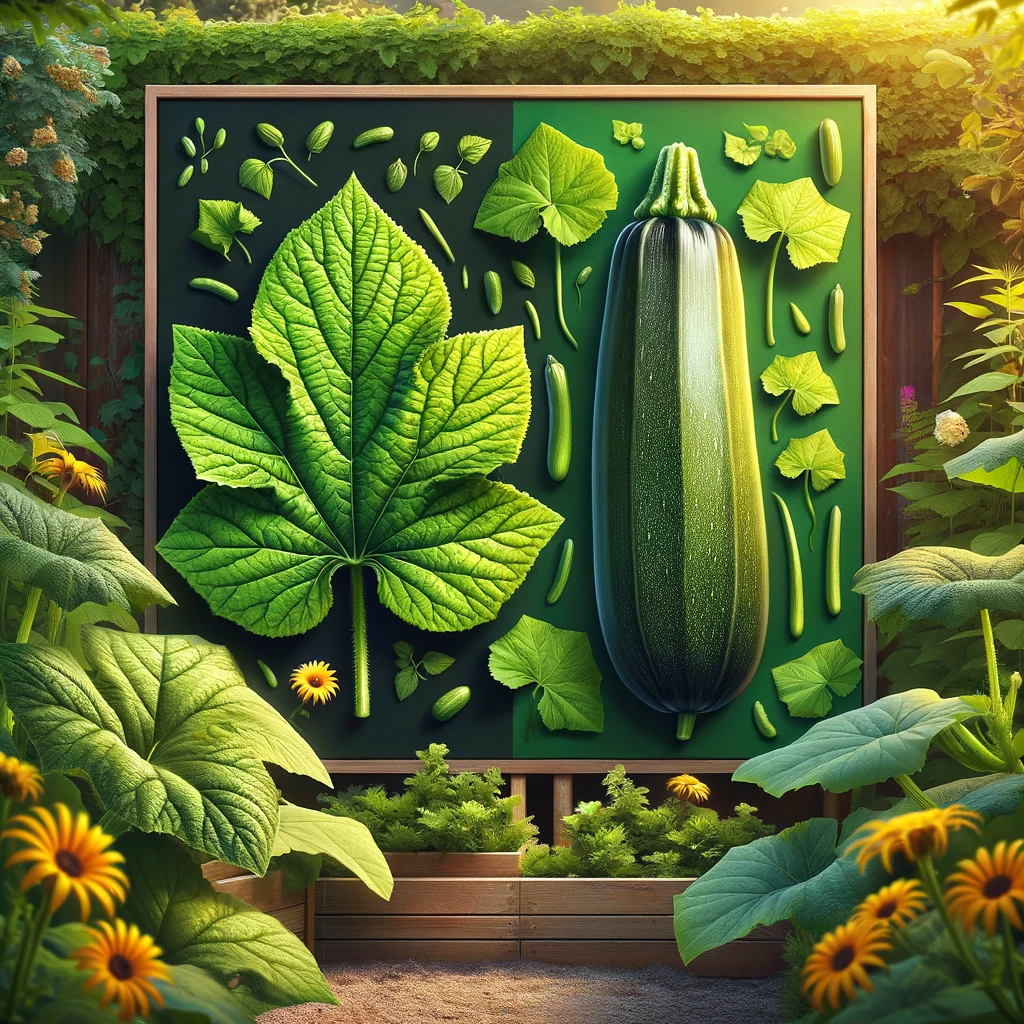Cucumbers and zucchini can appear very similar as seedlings, making it tricky for the untrained eye to tell them apart. However, being able to properly identify cucumber and zucchini plants is an absolutely essential skill for any gardener growing both of these popular vegetable crops. Getting them mixed up could lead to overcrowding, reduced yields, improper growing conditions, and general frustration!
Luckily, a trained eye can spot several key differences in the appearance, growth habits, and care requirements of cucumbers and zucchini. This article will take an in-depth look at how to confidently tell these plants apart. We’ll examine the subtle but important differences in their leaves, stems, flowers, fruits, pests and diseases, optimal growing conditions, and pairing options. Read on to become an expert at distinguishing cucumber vs. zucchini plants, and How to Tell Cucumber and Zucchini Plants Apart.
An Overview of Similarities Between Cucumbers and Zucchini
While cucumbers and zucchini exhibit many distinct traits, it’s important to first understand why they can be easily confused, especially in their immature seedling stages.
Cucumbers (Cucumis sativus) and zucchini (Cucurbita pepo) both belong to the same botanical plant family known as Cucurbitaceae. This family also includes melons, squash, and pumpkins. As such, they share some similar characteristics:
- Both grow as annual vegetable crops, completing their lifecycle within one growing season.
- They have similarly shaped broad, branching leaves that form a bushy foliage.
- Both produce yellow flowers and flavorful fruits that are eaten when immature.
- They thrive in warm weather and require full sun exposure.
- Each has male and female blossoms that require pollination for fruit production.
- They are prone to many of the same insect pests and fungal diseases.
However, upon closer inspection, you will notice several telltale differences between the two. Being able to distinguish cucumbers and zucchini early on is crucial for providing the proper care and conditions for each crop. Now let’s look at how to tell them apart.
Key Differences in Leaves
One of the most reliable ways to distinguish young cucumber and zucchini plants is by carefully examining their leaf characteristics. There are quite a few differences:
- Leaf shape – Cucumber leaves have a more rounded, lobed shape with smooth edges. Zucchini leaves are longer and more elongated, with deeper sinuses between the lobes.
- Leaf rigidity – Zucchini leaves tend to be slightly thicker and more rigid, while cucumber leaves are very tender and delicate. Zucchini leaves also feel pricklier to the touch.
- Leaf size – Cucumber leaves are noticeably larger, especially as the plant matures. Zucchini plants have smaller leaves.
- Leaf texture – Cucumber leaf surfaces are perfectly smooth. Zucchini leaves have a slight roughness or texture to them.
- Leaf color – The green color of zucchini leaves tends to be a bit lighter than cucumber leaves. Subtle but noticeable!
Here is a visual comparison:
| Cucumber Leaves | Zucchini Leaves |
|---|---|
 |  |
As you monitor your seedlings, keep an eye out for these leaf characteristics. They are very reliable indicators for identifying each type of plant.
Differences in Stems
In addition to the leaves, the stems of cucumbers and zucchini offer some telling signs:
- Stem shape – Zucchini stems are rigid with five distinct, angled sides. Cucumber stems are more rounded in circumference without prominent angles.
- Stem texture – Cucumber stems are nearly smooth, but they often have tiny spines or prickly hairs growing on them. Zucchini stems lack these spines and hairs, resulting in a perfectly smooth stem surface.
- Stem color – The color of the stems provides another clue – cucumber stems are a lighter green compared to the very dark green, almost black stems of zucchini plants. This is easily noticeable.
- Tendency to spread – As cucumber stems lengthen, they develop a spreading, sprawling habit. Zucchini stems grow more upright without sprawling.
By carefully feeling and observing the stem traits, you can confirm whether you are looking at a cucumber or zucchini.
Flower Differences
Once your plants begin to flower, the blossoms provide more distinctive clues to help identify each type:
- Flower size – Cucumber flowers are quite small, only 1-2 inches wide. Zucchini plants produce much larger yellow blossoms, typically 3-4 inches wide.
- Petal color – Cucumber flowers usually have petals that are a pale whitish-yellow. Zucchini flowers have a rich, golden yellow petal color.
- Fruit visibility – In cucumber plants, the tiny immature cucumber fruit is visible at the base of female flowers, tucked right behind the petals. It looks like a little green bulb. The zucchini fruit bulge is not as plainly visible within the female zucchini flower.
- Male flowers – Male cucumber flowers have a thin stem underneath the flower. Male zucchini flowers have a noticeable bulge at the base of the stem.
These flower differences may seem subtle, but they are highly reliable for telling cucumber and zucchini blossoms apart.

Fruit Shape and Appearance
Once female flowers are successfully pollinated and the plants begin to produce fruits, the differences become crystal clear.
- Shape – Cucumbers have a long, cylindrical, tapered shape. Zucchinis are short and rounded, shaped more like a squash.
- Size – Cucumbers continue to enlarge if left on the vine, sometimes reaching over a foot long. Zucchini are considered mature and ready to pick once they reach 6-8 inches in length.
- Surface texture – Zucchini fruits are prominently ribbed with small spines over a thin, tender skin. Cucumbers are perfectly smooth without ribs or spines.
- Color – Cucumbers are a very dark green outside. Zucchini are a lighter green with faint white speckles and stripes.
- Interior – Inside, cucumbers are moist with small edible seeds. Zucchini interiors are drier with a spongy flesh and larger seeds.
Once the fruits begin developing, it becomes glaringly obvious which plants are cucumbers vs. zucchinis when examining the size, shape, color, and texture.
Common Pests and Diseases
Cucumbers and zucchini share many of the same insect pests including cucumber beetles, aphids, squash bugs, and squash vine borers. But there are some differences in the diseases they are prone to:
- Powdery mildew – Zucchini are much more susceptible to this fungal disease, which coats leaves in a telltale white powdery coating. Cucumbers can also get powdery mildew but not as severely.
- Mosaic virus – Spread by cucumber beetles, this virus overwhelmingly attacks cucumber plants, causing twisted, distorted leaves and fruits. Zucchini are less affected.
- Wilt diseases – Fungal wilt diseases impact cucumbers far more than zucchini plants.
So if your plants begin showing signs of serious powdery mildew, chances are you are looking at a zucchini plant. Severe virus symptoms likely indicate a cucumber plant.
Growth Habits
The overall growth habits of cucumbers vs. zucchinis also differ noticeably:
- Cucumbers exhibit vining growth. The stems continue lengthening and spreading out along the ground or climbing trellises and supports. Zucchini has a more compact, bushy habit with shorter runner stems.
- Cucumber vines can reach up to 6 feet long if allowed to spread. Zucchini plants only reach 2-3 feet in diameter.
- Left alone, cucumber vines will spread out horizontally with tendrils attaching to supports. Zucchini grows in an upright, mounded form.
- Cucumbers require ample space and tend to grow aggressively. Zucchini plants are easier to contain in a smaller garden space.
So if your plants begin spreading out rapidly and grasping onto other plants or supports, that’s a telltale sign you have cucumbers!
Climate and Growing Conditions
Cucumbers and zucchini thrive under different environmental conditions:
- Temperature – Cucumbers prefer consistently warm weather with temperatures between 60-85°F. Zucchini can tolerate slightly cooler weather and temps down to 50°F.
- Moisture – Cucumbers need moist soil and require frequent irrigation, especially when fruits are developing. Zucchini are more drought tolerant.
- Soil – Cucumbers grow best in sandy loam soils with plenty of compost and fertilizer added. Zucchini will thrive in heavier, richer garden soils.
- Sun – Both need full sun exposure, but zucchini can tolerate light shade better than cucumbers.
Knowing these differences allows you to modify the planting location, irrigation schedule, and soil preparation to best fit each type of vegetable plant.
Companion Planting Options
Certain companion plants grow especially well alongside cucumbers or zucchini:
Cucumber companions:
- Dill – enhances growth and deters pests
- Beans & Peas – provide nitrogen
- Corn – provides shade and support
- Radishes – deter cucumber beetles
- Sunflowers – attract pollinators
Zucchini companions:
- Nasturtiums – repel aphids and squash bugs
- Oregano – improves flavor
- Onions, leeks, & chives – deter pests
- Legumes – fix nitrogen
So interplanting cucumbers with dill and radishes, or zucchini with nasturtiums, can create a symbiotic microclimate in your vegetable garden.
Tips for Proper Care of Each Crop
Once you’ve correctly identified your cucumber and zucchini seedlings, you can provide proper care for optimal health and productivity:
Caring for cucumbers:
- Provide sturdy trellises or cages for vines to climb
- Water at soil level frequently to maintain even moisture
- Use drip irrigation or soaker hoses to avoid wetting leaves
- Use mulch to prevent soil drying out
- Scout for cucumber beetles and signs of wilt
- Provide ample space between plants for vines to spread
Caring for zucchini:
- No need to trellis, but can use cages to contain plants
- Water deeply but less frequently than cucumbers
- Mulch to conserve moisture in soil
- Prune leaves or stems affected by powdery mildew
- Monitor for squash vine borers
- Space 2-3 feet apart in all directions
With proper care tailored to their differences, both vegetables will prosper!

How to Plant Cucumbers and Zucchini Together
Many gardeners find planting cucumbers and zucchini together to be an efficient use of garden space. Since they belong to the same plant family, they share similar nutrient needs and will thrive under the same conditions. Here are some tips for successfully growing cukes and zukes together:
- Select bush or dwarf zucchini varieties so vines don’t take over.
- Use trellises and cages to contain the spreading cucumber vines.
- Space plants 1-2 feet apart in all directions to prevent crowding.
- Plant a tall crop like corn or sunflowers on the north side for light shade.
- Use companion plants like nasturtiums and dill to fill space.
- Use raised beds amended with compost to improve drainage.
- Use soaker hoses or drip lines to easily water multiple vegetables.
- Apply a balanced vegetable fertilizer when planting and midseason.
- Monitor for pests like cucumber beetles that affect both crops.
- Harvest zucchini frequently to prevent giant fruits from developing.
With the right setup and care, you can maximize yields of both cucumbers and zucchini in the same garden space!
Conclusion
Cucumbers and zucchini both play an important role in any vegetable garden. While they may appear similar at first glance, understanding the differences in leaves, stems, flowers, fruits, and growing habits is essential for properly identifying each plant type. This allows you to provide ideal growing conditions through proper planting, watering, spacing, and pest management practices. Confidently telling your cucumber and zucchini plants apart will set you up for a bountiful harvest!



